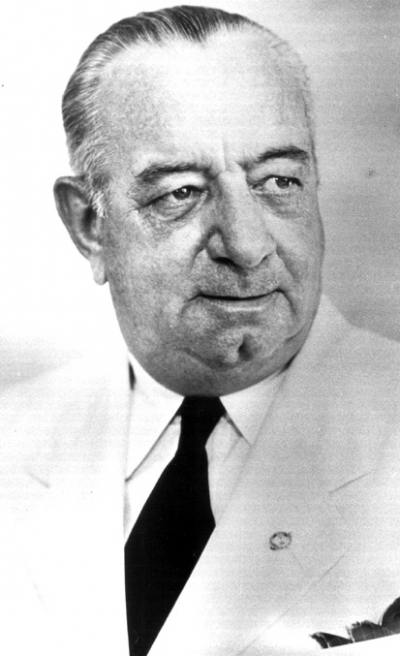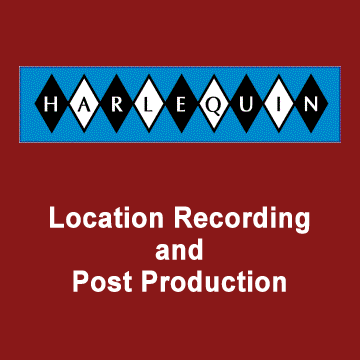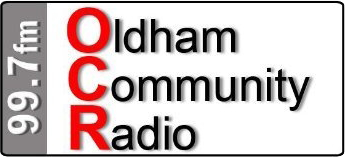Playlist 23 August 2020 |
Recording Details |
|
| Rhythm and Blues – Philip Sparke | Opening for weekly show Foden's Band MD: Michael Fowles - 2010 | 'Patrons' Choice III' - CD - Egon CD-SFZ154 - 2010 |
| A British March Parade (The President, Simoraine, Barnum and Bailey, The Melody shop) | Brass Band Froschl Hall (Austria) MD: Hannes Buchegger - 2012 | '20 Years Brass Live' - CD - 2012 |
| Three Figures - Herbert Howells | Brighouse & Rastrick Band MD: Dr. David Thornton - 2019 | 'The Music of Bliss & Howells' - SP&S DOY 389CD - 2018 |
| One Fine Day from Madam Butterfly - Puccini arr. Gordon Langford | Cornet Soloist Philip McCann with the Black Dyke Mills Band MD: Major Peter Parkes - 1985 | 'The Worlds Most Beautiful Melodies' - CD - Chandos Recording CHAN4501 - 1985 |
| What a Wonderful Day - Andreas Homlund | Melbourne Staff Band (Australia ) BM: Ken Waterworth - 2019 | 'Rise' - CD - MSBCD51 - 2019 |
| Brass Ablaze - Goff Richards | Foden's (Courtois) Band MD: Nicholas J. Childs - 1997 | 'Brass Explosion' - CD - Obrasso Recording CD863 - 1997 |
| Valse Bluette - Richard Drigo/Raphael Mendez arr. Mark Freeh | Euphonium Soloist Trevor Groom with the Rigid Containers Group Band MD: Bramwell Tovey - Date Unknown. | 'Free-Way' - CD - Heavyweight Records HR003/D - |
| Brass Band Boogie - Edrich Siebert | Canny Brass (Switzerland) MD: Ronald Frischknecht - 2009 | 'Canny 2009 Vol 2' - CD - Private Recording - 2009 |
| The Vikings - Philip Sparke | Eikanger Bjorsvik Band (Norway) MD: Howard Snell - 1997 | 'Sparke - The Music of Philip Sparke' - CD - Doyen DOY CD049 - 1997 |
| Waltzing Matilda - arr. Robert McAnally | Kew Band (Australia) MD: Mark Ford - 2000 | 'On the March' - CD - Muso Media - MM2-005 - 2000 |
| Little Suite for Brass No. 1 Op 80 - 1. Prelude; 2. Siciliano 3. Rondo - Sir Malcolm Arnold | Grimethorpe Colliery Band MD: Elgar Howarth - 1993 | 'Arnold On Brass' - CD - Conifer Classics – CDCF 222 - 1993 |
| Australians In Song - Barrie Gott | Digeridoo Soloist Stephen Bond Vocalist Mark Ham with the Brisbane Excelsior Band (Australia) MD: Howard Taylor - 2005 | ' Australians in Song' - CD - BEBInc - 2005 |
| The Prayer - David Foster & Carole Bayer Sager arr. Alan Ramsey | Cornet soloist Jim Hayes & Trombone Soloist Paul Kiernan with the Cooperative Funeralcare Band MD: Michael Fowles - 2013 | 'A Second from Midnight Jim Hayes is Jonny Midnight' - CD - World of sound Recording WOS 051CD - 2013 |
| Tone Poem Everywhere - Marcus Venables | North York Temple Band (Canada) BM: Glenn Barlow - 2013 | 'Everywhere' - CD - NYTB - 2013 |
| Roccata - Darrol Barry | Brass Band Willebroek (Belgium) MD: Frans Violet - 2008 | 'Roccata' - CD - Bernaerts Music Recordings BR 2009- 041 |
| The Lost Chord - Arthur Sullivan arr. Gordon Langford | Brighouse and Rastrick Band MD: Allan Withington - 1993 | 'Master Brass Vol 4 - All England Masters ChampionsBrighouse and Rastrick Band ' - CD - Polyphonic Recording QPRL 060D - 1993 |
| Nobody Does it Better - Marvin Hamlisch arr Paul Lovatt-Cooper | Shepherd Group Brass MD: Richard Wilton - 2018 | 'Shepherd Group Brass Band - In Concert Vol. 2 - 2018 |
| Nightingale Dances - Matthew Hall | Tredegar Town Band MD: Ian Porthouse - 2012 | 'Tredegar In Concert Vol.1' - CD - Avanti Recording - 2012 |
| Greensleeves - Traditional arr. Howard Snell | Leyland Band MD: Philip Harper - 2011 | 'The Age of Chivalry' CD - Doyen: DOYCD280 - 2011 |
| Havah Nagilah - Traditional arr. Alan Fernie | Brighouse and Rastrick Band MD: David Hirst - 2005 | 'Brighouse and Rastrick Band on a World Tour' - CD Obrasso Recording CD895 - 2004 |
| Rolling Thunder - Henry Fillmore | Brass Band of the Western Reserve (USA) MD:Dr Keith Wilkinson - 2007 | 'Windows of the World' - CD - BBWR - 2007 |
| Rhythm and Blues – Philip Sparke | Closing for weekly show Foden's Band MD: Michael Fowles - 2010 | 'Patrons' Choice III' - CD - Egon CD-SFZ154 - 2010 |
Sunday Bandstand 23 August 2020

Henry Fillmore (1881-1956) was born in Cincinnati, Ohio, the eldest of five children. In his youth, he mastered piano, guitar, violin, flute, and slide trombone. He kept his trombone activities a secret at first, his religious father a composer of gospel songs, believed it an uncouth and sinful instrument.
Henry's mother secretly bought a used trombone for him and obscured, from Henry's father, the son's learning to play the instrument. He began composing at 18, with his first published march Hingham. He loved circus music, American football, and his music-loving dog.
The trombone fascinated him the most because it always led the circus’ bands, but his formal trombone lessons were short-lived, and his unruly teenage humour continued to embarrass his family. Henry’s father agreed to send him to the Miami Military Institute to complete his education.
After graduating from the Institute in 1902 he was given a position in his father’s church hymnal company but was not happy unless he was playing his trombone.
To escape family tensions Henry and his wife joined Lemon Brothers Circus where Henry was responsible for playing the trombone and leading the circus band.
As Henry’s reputation as a bandleader, trombonist, and composer continued to grow over the next thirty years, his love of the music, colourful spectacles, and ringmaster attention of the circus were continually reflected in his new compositions and performances as director of the Shrine Temple Band between 1921 and 1926, and later with his own Fillmore Band for Cincinnati’s Radio Station’s coast-to-coast broadcasts between 1927 and 1930 which featured his musical four-legged friend, Mike, the radio hound. He died in Miami Florida in December 1956.
While best known for march music and screamers, he also wrote waltzes, foxtrots, hymns, novelty numbers, and overtures. One of his best-known marches which he composed in 1916 closes the show for this week.



















